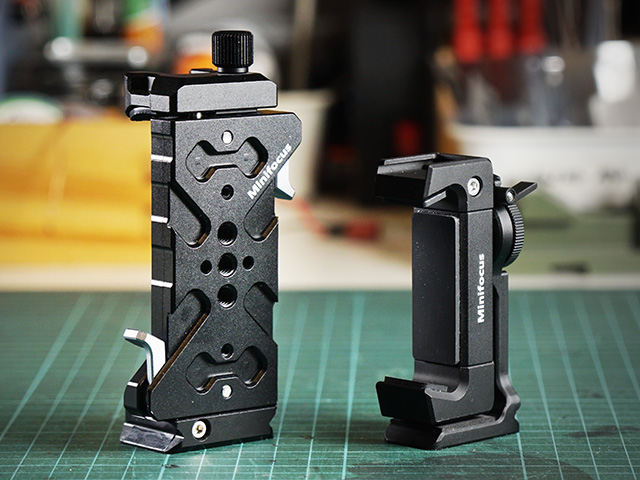Introduction

I recently designed and 3D printed a low-profile dust hose adapters to use with my cyclone dust collector separator unit (like this one on AliExpress).
The cyclone dust separator captures most of the large and medium-sized debris before it reaches the vacuum. It helps keep the filter cleaner and lets you go much longer before the dust bucket fills up — especially useful for small vacuums in a home workshop.
Before this, I was using a bunch of PVC reducers and pipe pieces to step the size down from 2 inches to the size of my dust hoses and tools. It worked, but it looked messy, took up a lot of space, and added extra joints where dust could leak.
So, I decided to design my own low-profile adapters that connect directly to the cyclone ports without any extra parts.
Material List
3D Print Files & Downloads
You can download the STL files here:
COMPONENTS AND TOOLS
FILAMENT USE IN THIS PROJECT
- eSun PETG: Aliexpress
Design & Fit Details
I made two sizes of this adapter:
- 2-inch → 30 mm – connects from cyclone outlet to my shop vac dust hose with a 30 mm OD (compatible with 32mm tools connector).
- 2-inch → 36 mm – connects to cyclone inlet to a dust hose with 39 mm OD / 32 mm ID, paired with a 36 mm OD vacuum hose adapter.
Both adapters share the same overall design — the only difference is their size. They’re low-profile, snug-fitting, and easy to 3D print.
The cyclone separator comes with a 2-inch plastic adapter that fits inside the cyclone pipe, likely designed to connect directly to a 2-inch hose. However, I decided not to use that one. Instead, I designed my adapters to fit over the outer side of the pipe, which reduces the number of joints, shortens the overall assembly, and gives a cleaner look.

The cyclone’s inlet and outlet pipes have an outer diameter of about 55.6 mm (measured with calipers) and are almost flat. So, I designed the inner side of my adapter with a slight taper — just enough to make it easier to install while keeping a solid connection and improving airflow.
The hose side has a more pronounced taper, since most vacuum and dust collection accessories are also tapered. This lets the dust hose slide in smoothly and lock in place without clamps. It also makes it compatible with standard dust hoses and adapters. The taper adds flexibility, allowing it to grip tightly even if there’s a small size difference between hoses.



To make sure the connection is airtight between dust hose and universal connector, I use a stainless steel hose clamp (like this one) to hold the dust hose firmly with the universal vacuum connector, even though the fit is already snug.
I’ve included a dimension diagram above showing the exact measurements of the model. Keep in mind that fit can vary depending on your printer’s accuracy, filament, and settings.
If the connection feels slightly loose, you can wrap a bit of tape for a quick fix, or apply a thin layer of silicone sealant for a more permanent and airtight fit — ideal for connections that don’t need to be removed often.
Print & Use
I printed both parts in PETG for durability, but PLA should work fine too if your setup isn’t exposed to high heat. No supports are needed — just print them upright, and they should fit tightly on the cyclone ports.
This adapter is designed for my cyclone unit, but it should also fit other cyclone separators that use a 2-inch (≈55 mm OD) pipe. Check the dimensions in the diagram above to confirm compatibility with your model.
Conclusion
This small upgrade makes a big difference — cleaner connections, less clutter, and better airflow. It keeps the setup compact, reduces the number of fittings, and makes hose changes easier and more secure.
While it doesn’t change how the cyclone itself performs, the adapter improves usability and overall efficiency of the dust collection system. It’s easy to print, works with standard dust hoses, and may also fit other cyclone units with 2-inch ports.











